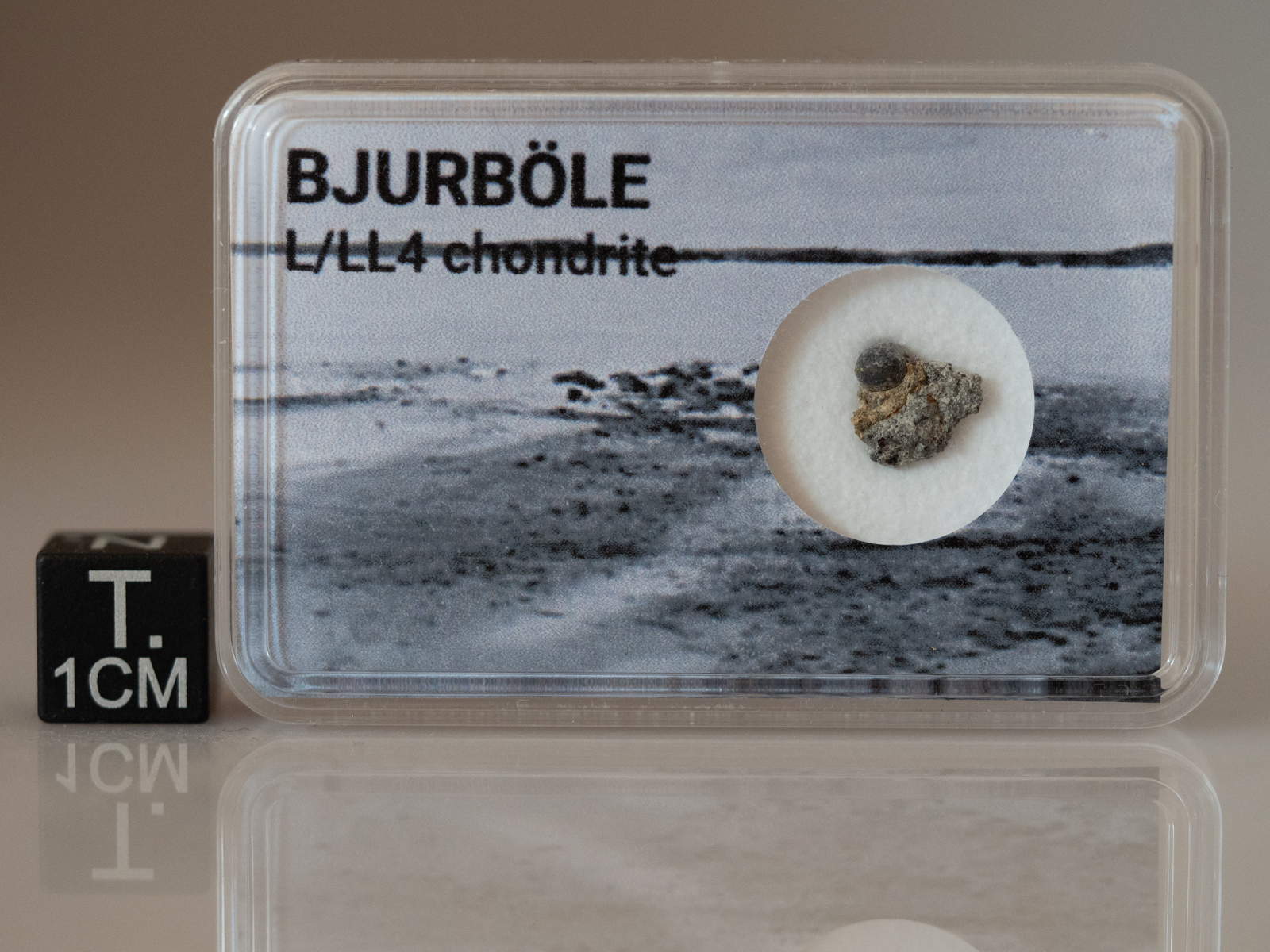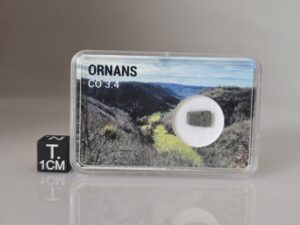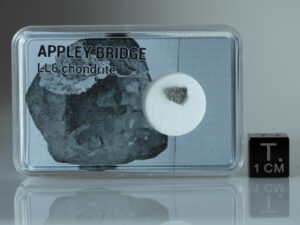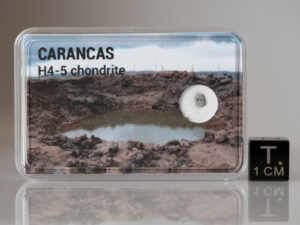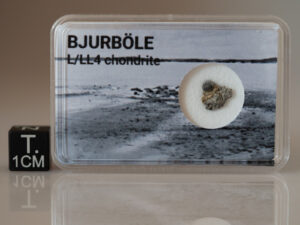Description
A single stone fell through sea-ice and broke into fragments with one large fragment of 80 kg and many smaller pieces. The recovered portions of the meteorite are unusually friable and consist primarily of chondrules and metal grains. In thin sections chondrules are well defined and, along with the much less abundant Fe-Ni metal, are set within a very fine-grained matrix. Chondrule types are varied, but radial pyroxene (RP) and barred olivine (BO) chondrules dominate. Bjurböle has received less attention than some of the even less equilibrated type 3.0—3.9 unequilibrated ordinary chondrites, but a careful reading of the literature reveals a surprising variety of textures, phases, and enigmas.
Bjurböle is the most massive of those 20 meteorites classified exactly as ‘L/LL4’ chondrites and is one of only three witnessed L/LL4 chondrite falls listed by The Meteoritical Bulletin Database (January 2016). Only 11 total L/LL falls of all petrologic types have been witnessed [only ~1% of witnessed meteorite falls]. Whether L/LL meteorites are merely statistical oddities due to imperfect measurements or classification criteria or whether they are actually derived from a different original parent body (OPB) than the putative OPBs of the L and LL chondrites is not known.
The main mass has been at the University of Helsinki with 215 kg remaining as of 2000.

